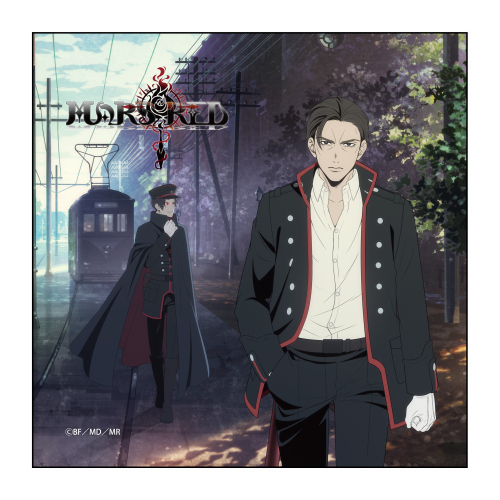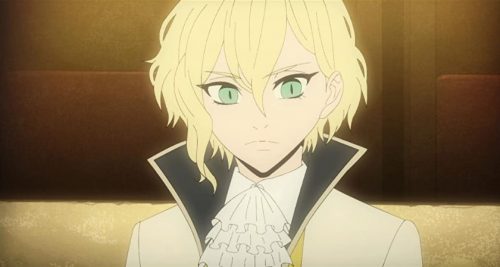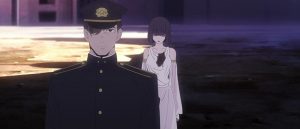
The 1920s vampire drama Mars Red has more to offer than just some cool historical backdrops and blood-sucking action—true to its origins as a stage play, it weaves references to classical theater and early films alike into its narrative every week. If you pay attention to the marquee outside Misaki’s performance venue or the musings of vampiric thespian Defrott, you can even tell what each episode’s inspiration will be. Let’s check out a few of these hidden parallels to theater in Mars Red!
Misaki and Salome

By far the most overt reference to performance art comes in the first episode, which is inspired by Oscar Wilde’s 1891 play Salome. Famous actress Misaki had been playing the title character at a theater in Tokyo, but was captured and imprisoned after mysteriously turning into a vampire. She mostly speaks in lines of dialogue from the play—specifically, she repeatedly quotes an exchange between Salome and the man who the character has been ordered to seduce and murder, Jokanaan (John the Baptist). She implores the observing Colonel Maeda, to whom she was once engaged, to be her co-star. So, just like Salome, Misaki tries to seduce Maeda over to her side...
Unlike the biblical story or its theatrical adaptations, though, Jokanaan/Maeda doesn’t fall for her tricks. He hunts her down himself when she escapes and attempts to execute her, but she steps into the light and burns herself up before he can stain his hands with her blood. Mars Red introduces a lot of twists like this, so even if you’re familiar with the work being referenced, you’ll still be surprised at what happens. It’s fascinating!
Other Theater and Film References

Episode 2 is an homage to Romeo and Juliet, with a few elements cribbed from the kabuki play Chuushingura as well. Maeda refuses to allow the vampiric couple to die together like Romeo for Juliet or the 47 ronin for their master, since he wasn’t able to do that for Misaki. He and the Code Zero vampires seem to be the wild cards that change the outcomes of these narratives, also disturbing the plots of King Lear, Hamlet, 1950s Western movie Wagon Master, and many more in other episodes. Perhaps this is a way of showing that they’re all trying to fight fate—even though these characters are quickly becoming part of a bygone era and their lives are collapsing around them (it’s no coincidence that Mars Red takes place in the same year as the Great Kanto Earthquake), they still desperately carve out a place for themselves and refuse to fade away.
Final Thoughts
This anime can be a little confusing and cerebral, especially when you’re unfamiliar with the works being referenced, but it’s worth watching because there’s just so much going on if you read between the lines. We can’t wait to see what other plays and films Mars Red takes inspiration from as it continues—whatever they are, the result is bound to be mind-blowing!
What did you think of our overview? Have you noticed any hidden parallels that we left out? Let us know in the comments, and thanks so much for reading!
Recommended Post
Mars Red
Recommended Post





